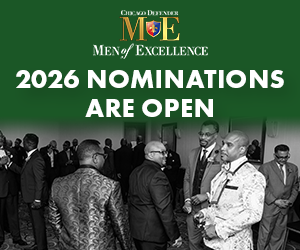Adobe Stock Photo
In the first half of the 20th century, educators assigned children who performed above grade level to higher grades. By the 1950s, psychologists wanted to provide a more developmentally appropriate setting than putting younger students in classrooms with older kids.
The new model would pair advanced learners with kids their own age.
The Soviet Union launched the world’s first satellite in 1957. The United States felt it was falling behind the Soviets in space technology, so Congress passed the National Defense Education Act of 1958. As part of a national effort to improve the next generation’s math and science abilities, the NDEA intended to offer financing to identify gifted students and provide them with a distinct education.
In the 1960s, Seattle Public Schools established the Accelerated Primary Program for exceptional students. Over time, Seattle’s original gifted program morphed into the Highly Capable Cohort schools. HCC eventually included three high schools, five middle schools, and three primary schools. HCC schools specialized in accelerated learning; hence, the curriculum was one to two years ahead of the student’s grade level, depending on the subject.

During the 1970s, when racial integration was a national priority, a Seattle parent committee was tasked with ensuring that exceptional students were not grouped together in racially segregated classrooms.
In 2021, Seattle Public Schools made national headlines when it announced its plan to phase out Highly Capable Cohort Schools by the 2027–28 school year.
Were Seattle’s gifted schools failing to improve the capabilities of the next generation? No. Were Seattle’s gifted schools racially segregated? Of course not. However, critics claimed that the gifted schools lacked diversity. The majority of gifted children were White and Asian; critics complained that Black and Hispanic students were underrepresented.
The term “underrepresented” describes a statistical difference that illustrates racial inequality. However, the statistical difference may not exactly reflect reality.
Seattle Public Schools had 51,992 students in 2022–23. The demographic breakdown was as follows: 45% White, 15% Black, 14% Hispanic, 13% “two or more races,” and 12% Asian.
The gifted schools had a total of 5,727 students, accounting for 11% of the total. 52% were White, 3.4% were Black, 8.2% were Hispanic, 20% identified as “two or more races,” and 16% were Asian.
Racial equity is achieved when each racial group’s rate of involvement in a certain activity corresponds to its total percentage of the population.
Since Whites account for 45% of the entire student population but 52% of gifted school students, those who advocate for racial equity believe that White students are overrepresented. Black students make up 15% of the overall student population, while only 3.4% of Blacks are gifted school students. This shows a major underrepresentation. In hard numbers, 15% of 51,992 total students equals 7,800 Black students, yet 3.4% of 5,727 gifted students equates to only 171 Black students.
Because Black students account for 15% of the total school population, proponents of racial equity say Black students should likewise account for 15% of gifted schools. 15% of the 5,727 total gifted population would equal 855 Black students.
Since there are numerous variables that contribute to racial differences, the notion that racial participation rates should match the racial group’s total population is wishful thinking. Only those who subscribe to Ibram X. Kendi’s philosophy, which holds that racial disparities demonstrate systemic racism, condemn Seattle’s gifted schools for a lack of diversity.
The facts are that the percentage of each racial group at Seattle’s gifted schools corresponded with the percentage of students in each racial group who passed the required exams to be declared gifted, but because there were only 171 Black students instead of 855, all gifted schools had to be closed to correct this racial inequality.
Many Black Seattle parents opposed the closure of gifted schools. These Black parents requested that Seattle Public Schools do more work to identify Black students who qualify for gifted schools. A Black father urged the Seattle School Board to investigate the potential negative impact of gifted school closures on currently enrolled Black students. He also underlined that gifted schools benefit Black children, especially Black boys, more than their peers.
Starting in 2024–25, Seattle’s public schools will introduce their “whole classroom model” to replace gifted schools. The new model will provide individual learning plans for each student in the same classroom, with no additional professional support. The “whole classroom model” aims to tackle underrepresentation by acknowledging the potential for giftedness in all students, irrespective of their ability.
Emma Camp of Reason Magazine stated, “When school districts get rid of advanced offerings in a bid to reduce racial inequality, they end up doing the opposite of what they claim to intend. While wealthier families can move to better school districts or enroll their children in private schools, smart—yet poor—kids end up getting stuck in “equitable” classrooms that leave them understimulated and ignored.”
Ask someone, “How do you equalize a forest?”
They won’t know, but if you ask gifted students in Seattle, they will all correctly answer: with an axe.




